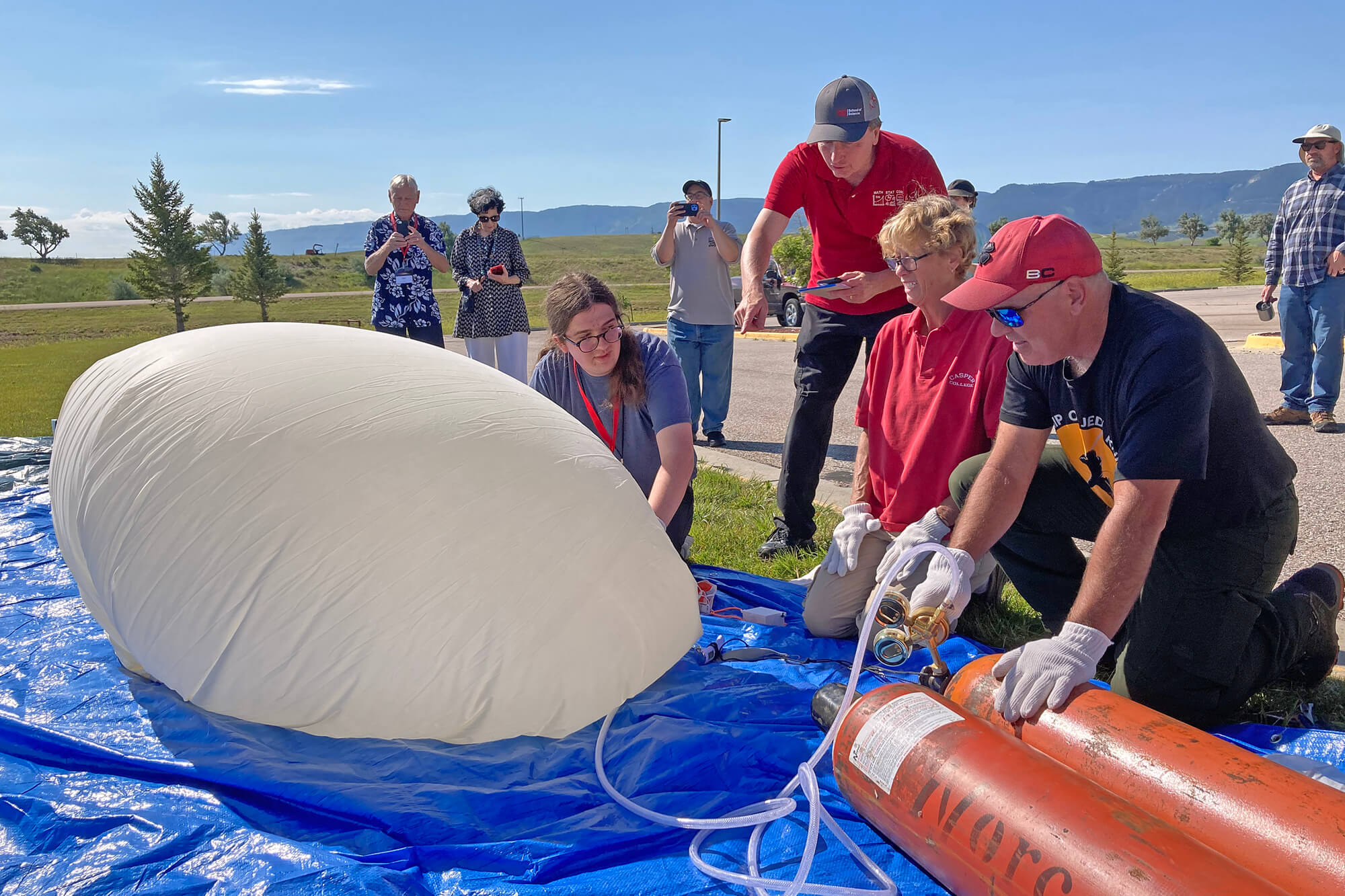NASA selects Casper College and NCSD #1 to participate in eclipse project

Casper College instructors and a high school student work on getting the latex balloon ready for launch. Far right, Paul Marquard, physics and engineering instructor, carefully fills the balloon with helium while former Casper College electronics and robotics instructor Megan Graham, and Kendall Jacobs, math instructor watch on and Natrona County High School student Jack Dawson helps keep the balloon steady. (Casper College photo/Lisa S. Pearce Icenogle)
NASA has selected Casper College and Natrona County School District #1 to participate in the Nationwide Eclipse Ballooning Project for an annular solar eclipse on Oct. 14, 2023, and a total solar eclipse on April 8, 2024.
On Friday, the students launched their first test balloon. According to Paul Marquard, engineering and physics instructor at Casper College, the launch is one of two or three scheduled practice launches before the October eclipse.
Much of the hardware for the launches was built during the spring 2023 semester to allow for the summer test launches. Students are composed of both Casper College and Natrona County and Kelly Walsh high school students, and all must be enrolled in the Casper College class ES 1490, Special Topics, High Altitude Ballooning. The class will continue into both the fall 2023 and spring 2024 semesters.
“NEBP payloads focus on either atmospheric science or engineering. Casper College is participating in the engineering category. For engineering projects, each team will launch one balloon during each eclipse, floating its 12-pound payload, which includes livestreaming cameras, at about 70,000 feet or higher,” said Marquard.
The launch, which takes approximately three to four hours, also involves following the balloon until it bursts and lands to collect the payload. “Collecting the payload can take another few hours, depending on where it lands,” Marquard noted.
“The NEPB is an important educational experience for participants,” said Angela DesJardins, director of the Montana Space Grant Consortium. “But it’s also designed to gather important, solid science.”
In addition to funding from the Montana Space Consortium, the Casper Board of Cooperative Educational Services helped fund the project. “The project received a $8,356 grant from BOCES because it was a partnership with NCSD #1 for the local portion of the project,” said Jeana Lam-Pickett, BOCES manager. In addition to the grant, BOCES also funded tuition for the Natrona County School District #1 high school students to take the classes needed to participate in the balloon launch.
According to NASA, NEBP payloads focus on either atmospheric science or engineering. All teams will participate in both eclipses, and the resulting data will be analyzed and made publicly available.
